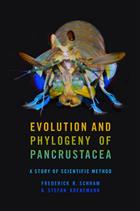Evolution and Phylogeny of Pancrustacea: A Story of Scientific Method
- Publisher : Oxford University Press
Our customers have not yet submitted a review for this title - click here to be the first to write a review
Description:
The scientific understanding of arthropod phylogeny and evolution has changed significantly in recent decades. One of the most momentous alterations involved crustaceans, which are not a monophyletc group, but are part of a larger group along with insects: Pancrustacea. The old ideas surrounding crustacean evolution have served scientists well for many years; it is now time to turn toward new research by embracing the results derived from investigations conducted largely within this century. For example, new definitions have arisen from sources across several fields of study, and Frederick R. Schram and Stefan Koenemann have created a book that explores paleobiodiversity and the diversity of modern body plans. Developments within ontogenetic studies continue to generate remarkable insights into crustaceomorph evolution in regard to patterns of embryology and a revolution in the application of development genetics. Phylogeny techniques of analysis and new sources of data derived from molecular sequencing and genetic studies have forced scientists to consider new hypotheses concerning the interrelationships of all the pancrustaceans, both the crustaceomorphs and Hexapoda. Yet, some fossil groups still remain enigmatic (Thylacocephala). Despite this, research into fossils (even if incompletely understood) fills in gaps of our knowledge of paleobiodiversity, and it's useful for many things, including analyzing the origin and early evolution of Hexapoda. Evolution and Phylogeny of Pancrustacea demonstrates the use of multiple alternative hypotheses and other techniques through the well-executed presentation of diverse data sources involving Pancrustacea. Readers are left with clues to great mysteries, including the possible pathways of evolution within marine arthropods.
You may also like...
Woodlice and Waterlice (Isopoda: Oniscidea & Asellota) in Britain and Ireland
Gregory, S.
Price £19.95
Pillbugs and other Isopods: Cultivating Vivarium Clean-up Crews and Feeders for
McMonigle, O.
Price £34.95










